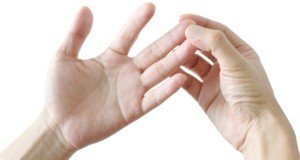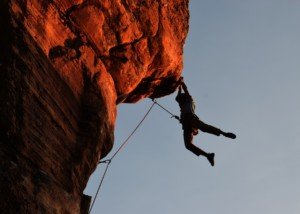
Follow these guidelines to help prevent finger pain related to climbing.
Finger pain from climbing can be caused by more than one factor, says Joseph Ciccone, DPT, CSCS, a doctor of physical therapy and certified strength and conditioning coach with ColumbiaDoctors in New York, NY.
“If you are a novice and start climbing, then having light soreness can be expected as your body is performing a new activity and needs a chance to accommodate to the new stresses,” says Ciccone.
“It is especially important to gradually increase amount of time climbing and difficulty levels, as this will allow your body to become conditioned to the new imposed stresses, which will decrease soreness.”
That’s the first step to preventing climbing-related finger pain. I’ve done a lot of climbing myself, and can vouch that sometimes, finger pain or discomfort comes the day after climbing, so it’s easy to get ahead of yourself while you’re participating in this sport without realizing how your fingers will feel the next day or two after.
#2: Ciccone advises all levels of climbing athletes to perform strengthening exercises for the hands, elbows and shoulders, “as the strength will improve control and stability when climbing,” he says.
#3. Ciccone explains that after climbing you can apply a cold compress or ice to your hand and fingers to minimize pain and inflammation. You can dip your hand in a bowl of ice and water and soak for 10-15 minutes.
#4. Climbing is one of those sports where the athlete really pays for it when consistency is lost over even a short time. Ciccone urges consistency.
Two or three times a week is consistent enough to get the fingers used to the stress of climbing.
#5. Some climbers don’t believe cross-training is necessary, and shy away from gym workouts.
At a minimum, these athletes should use hanging boards and devices specifically for strengthening the hand and grip, says Ciccone.
#6. “In addition it should be noted that climbing is a full body activity, and having addressing shoulder, core and lower extremity strength/dexterity and endurance are all factors that can take stress away from fingers and utilize other parts of the body to distribute forces.”
This means that climbers will benefit from strength training. This doesn’t have to be with heavy weights.

Shutterstock/Oleksandr Zamuruiev
Strength training with light to medium resistance will strengthen joints and help the body, as Ciccone says, distribute forces more efficiently.
Implement these guidelines and they’ll go a long way at helping prevent climbing-related finger pain.
 Joseph Ciccone’s practice focuses on numerous musculoskeletal conditions, including management of chronic and acute injuries, and surgical rehabilitation. He has a strong interest in adolescents, weekend warriors and professional athletes.
Joseph Ciccone’s practice focuses on numerous musculoskeletal conditions, including management of chronic and acute injuries, and surgical rehabilitation. He has a strong interest in adolescents, weekend warriors and professional athletes.
 Lorra Garrick is a former personal trainer certified by the American Council on Exercise. At Bally Total Fitness she trained clients of all ages for fat loss, muscle building, fitness and improved health.
Lorra Garrick is a former personal trainer certified by the American Council on Exercise. At Bally Total Fitness she trained clients of all ages for fat loss, muscle building, fitness and improved health.
.









































